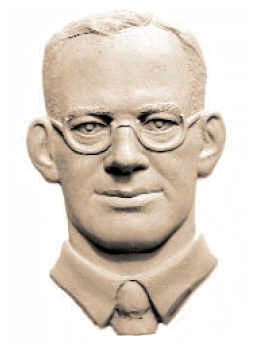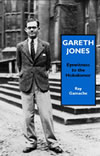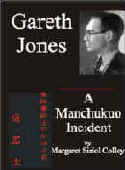Gareth Jones
[bas relief by Oleh Lesiuk]
HOME |
Stop Press |
Complete Soviet Articles & Background Information |
Précis of Gareth's
|
All Published Articles |
BOOKS
|
|
|
|
More Than Grain of Truth(2005) |
|
|
TOPICAL
'Are you Listening NYT?' U.N. Speech - Nov 2009 |
Gareth Recognised at Cambridge - Nov 2009 |
Reporter and the Genocide - Rome, March 2009 |
Order of Freedom Award -Nov 2008 |
Premiere of 'The Living' Documentary Kyiv - Nov 2008 |
Gareth Jones 'Famine' Diaries - Chicago 2008 |
Aberystwyth Memorial Plaque 2006 |
GENERAL
Scholarship Fund |
Site Map |
Links |
Legal Notices |
Sponsored Links |
Contact |
PUBLICATION ANNOUNCEMENT:
HOLODOMOR: THE UKRAINIAN GENOCIDE, 1932-1933
Mr. Charles Schlacks, Jr., Publisher, proudly announces the publication of the Holodomor 70th Anniversary Commemorative Edition of Canadian-American Slavic Studies, Vol. 37, No. 3, Fall 2003.
Copies of Holodomor: The Ukrainian Genocide, 1932-1933, can be ordered from the publisher via the following contact information. The price of this special edition is: $5.00, plus $2.00 US postage, $3.00 in Canada, and $4.00 foreign.
Apply with cheque to: Mr. Charles Schlacks, Jr., Publisher, P. O. Box 1256, Idyllwild, CA 92549-1256, USA - or Email: schslavic@tazland.net
OR for Payment with CREDIT CARD (at additional $0.50 supplemental cost for commission charges):
CLICK HERE FOR PRINTABLE PURCHASE FORM FOR FAXING OR POSTING CREDIT CARD ORDERS.
The journal features the following articles:
-
Foreword: "1933. Genocide. Ten Million. Holodomor," by Peter Borisow, President of the Hollywood Trident Foundation and the Genocide Awareness Foundation. Mr. Borisow's article focuses on the fact that it is necessary to correct the erroneous perception that Holodomor was a weather-generated event, as is the common public perception gained through the use of the term, "famine."
-
Margaret Siriol Colley and Nigel Linsan Colley wrote, "Gareth Jones: A Voice Crying in the Wilderness," an article based on the British reporter Gareth Jones' articles (including those that first broke the news of the Holodomor to the west), diaries, and letters, as well as official British government documents, and letters from former Prime Minister, David Lloyd George.
-
Dr. Daria Darewych's article, "Images and Evocations of the Famine-Genoide in Ukrainian Art," is enhanced by 16 exemplary illustrations. Dr. Darewych is the President of the Shevchenko Society of Canada, and is a Professor of Art History at York University. Her article explains the reasons why, because of the political oppression pervasive in the USSR, there was, of political necessity, a dearth of artistic images dealing with the Holodomor until the recently achieved freedom of expression permitted the subject to be artistically addressed.
-
Dr. James E. Mace, Professor of Political Science at the Kyiv-Mohyla Academy National University contributed his article, "Is the Ukrainian Genocide a Myth?" Citing Stalin's letter to Kaganovich of 11 September 1932, he points out the unquestionable fact that the genocidal aspects of the Holodomor were both known and condoned at the highest level of the Stalinist regime.
-
"The Holodomor: 1932-1933," by Guest Editor Cheryl A. Madden, provides an overview of the Holodomor, and makes use of a variety of international and multi-ethnic sources to support its various points. Ms. Madden also contributed the Introduction, "A Selective Annotated Bibliography of Books in English Regarding the Holodomor and Stalinism," and her review of the book of primary source famine-appeal letters, We'll Meet Again in Heaven: German-Russians Write Their American Relatives, 1925-1937, by Ronald J. Vossler.
-
Johan Ohman, a Ph.D. candidate at Lund University in Sweden, addresses the ways in which Ukrainian subjugation by the USSR, especially as demonstrated by the ravages inflicted upon the populace by the Holodomor, influenced the formation of both national, and personal identities. He also discusses how these subjects, as well as Ukrainian history in general, are presented in Ukrainian textbooks.
-
"The Holodomor of 1932-1933, as Presented in Drama and the Issue of Blame," by Dr. Larissa M. L. Zaleska Onyshkevych, President of the Shevchenko Society of America, explores the Holodomor-related works of the playwrights, Yuriy Yanovskyi, Serhiy Kokot-Ledianskyi, and Bohdan Boychuk. As with visual arts, the problem of Soviet control of all aspects of life prohibited these writers, and others, to present the Holodomor in its horrible truth and vastness. While in the thrall of the Soviet Union, these writers could mention the ravages of the Holodomor only through the use of veiled allusions, or in publications written by the Diaspora and/or published in the west. Once the collapse of the Soviet Union removed the threat of fast and sure reprisals against the artist, his work, and his family members, artists and writers were freed to relate the once-captive history of their people.
-
Orysia Paszczak Tracz translated primary source testimonies from the book edited by Lidia Borysivna Kovalenko and Volodymyr Antonovych, Holod 33: A National Memorial Book. Mrs. Tracz is an Ukrainian ethnographer, translator, and frequent contributor to The Ukrainian Weekly. The variety, and yet universality of experiences suffered by those providing testimonies for this book express the profound influence of the terrors these people witnessed and never forgot.
|
|
|
|



